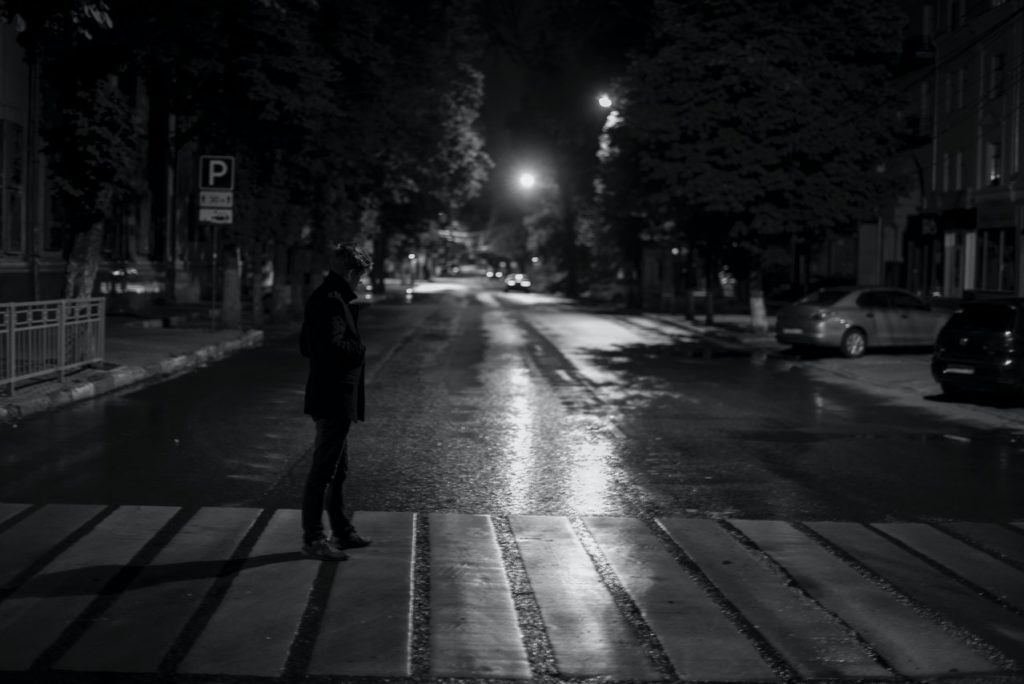
I learned this today. We can’t see colors in the dark because our eyes detect light waves in two different ways.
In our eyes, we have rods and cones that are both used to detect light. The cones are sensitive to light wavelengths, and we use them to see color. The rods are sensitive to low levels of light.
The cones are clustered at the center of the retina. There are about 6 million cones in the eye. They are divided up into blue, green, and red-sensitive cones. Each cone contains light-sensitive proteins called opsins. These opsins fall into three types that differ by a few amino acids. This difference causes them to absorb different light wavelengths. When this protein is stimulated, it sends an electrical signal to the brain. The brain can work out which cones have been stimulated and it can create an image. It can create colors by knowing how many of which color cone have been activated. Blue cones respond most strongly to a wavelength of 420 nm, green cones to 534 nm, and red cones to 564 nm. We can see wavelengths from 380 to 700 nm. When light bounces off an object, say a slightly unripe banana, some of the light is absorbed by the object and some of the light is reflected back. The reflected wavelength enters our eyes, and the cones detect it. With our unripe banana, the green and red cones would react in varying degrees to create an image of the banana with yellow and green areas.
We probably evolved this color vision because it helped us to find food. It is easier to see plants and fruit when we can see in color. It also helped us see animals, especially camouflaged ones. It would help us hunt and to avoid being prey.
The other light-sensitive part of our eye is the rods. Compared to the 6 million cones in the eye, there are about 92 million rods. The cones are at the center of the retina, but the rods are spread out farther towards the edge of the eye. They are very useful when we use our peripheral vision. The rods can react to very low levels of light. A rod can be activated by a single light photon! Your brain can register ten of these reactions as a light flash. That means you can see ten photons of light! The rods have a stack of 1000 discs of photoreceptor molecules. These are highly colored, which means they can absorb very low levels of light. They have far more opsins than the cones do.
During daylight, the rods are basically powered down. They come to the fore at night when the cones don’t receive enough light to be able to start their chemical reactions. The rods are stimulated by a very small amount of light. However, all of the rods contain the same protein. In the cones, there are three different types, sensitive to different wavelengths, but there is only the one in the rods. That means, the brain can detect the amount of light that is hitting the eye, but it cannot detect the wavelength and make color. So, you only see in shades of gray.
We have far more cones in our eyes than cats do, which is why we can see far more shades of color than they can. However, cats have many more rods than we do, which means they can see six times as much detail at night as we can.
So, you cannot see color at night because you are using your rods which are far more sensitive to light but do not have the ability to detect color. This is because they have only one protein to react to the light and make an electrical signal for the brain whereas the cones have three types of protein to detect different wavelengths. Still, seeing in gray at night is far better than not being able to see at all. And this is what I learned today.
Source
https://www.ncbi.nlm.nih.gov/books/NBK22541/
http://www.chemistry.wustl.edu/~edudev/LabTutorials/Vision/Vision.html
https://indianapublicmedia.org/amomentofscience/night-vision-humans-color.php
http://www.madsci.org/posts/archives/2000-01/949047063.Ns.r.html
https://en.wikipedia.org/wiki/Rod_cell
https://askabiologist.asu.edu/rods-and-cones
https://www.cis.rit.edu/people/faculty/montag/vandplite/pages/chap_9/ch9p1.html
